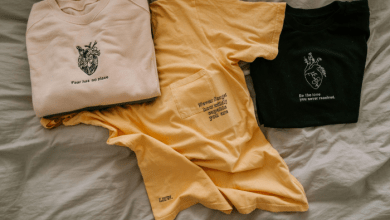
No other accessory exudes prestige more prominently than a Rolex watch. The name itself commands respect, the kind you earn from a legacy built on integrity and accomplishments. And just like the things you may have achieved, luxury watches aren’t replicable. There are, however, poor and illegally-produced versions.
Counterfeit Rolex watches abound, so make sure you know how to identify the real thing. Otherwise, you’re getting something that doesn’t represent the true Rolex value. On that note, here are nine proven ways to spot a genuine Rolex:
1. The Weight and Craftsmanship Test
A genuine Rolex feels solid in your hand—this isn’t just a coincidence. Rolex watches are made from high-quality materials, including 904L stainless steel, gold, or platinum, all of which add to their substantial weight. Counterfeit models, on the other hand, often feel noticeably lighter, because they’re made from lower-grade materials.
The craftsmanship is another giveaway. Every component of a Rolex, from the case to the bracelet, is meticulously finished. If the edges feel rough or the bracelet links seem flimsy, it’s likely not the real deal.
2. Examining the Rolex Cyclops Lens
A simple test? Hold the watch at eye level and check if the date appears crystal-clear and properly centered. If the magnification is weak or off-center, chances are you’re dealing with a counterfeit.
3. The Ticking Sound Test
A Rolex doesn’t tick—at least, not in the way most watches do. Rolex timepieces are powered by high-precision mechanical movements, meaning the second hand moves in a near-seamless glide. In contrast, many counterfeit Rolexes use quartz movements, resulting in a noticeable ticking motion.
Put the watch close to your ear. Do you hear a loud ticking? If yes, that’s likely a fake in your hands. Genuine Rolex movement is so smooth and refined that it’s virtually silent.
4. Engravings and Serial Number Authentication
Every Rolex has a unique serial number and reference number engraved with absolute precision. This engraving is found between the lugs at 6 and 12 o’clock or on the rehaut (inner bezel). A genuine Rolex engraving is deeply etched, sharp, and perfectly aligned, while counterfeits often have shallow, uneven, or blurry markings.
To check, run your finger over the engraving. On a real Rolex, you’ll feel crisp, deep cuts. If the text looks faint or feels smooth, it’s a red flag. In addition, Rolex serial numbers can be verified through the official database, providing an extra layer of authenticity.
5. Dial Details: Spotting Inconsistencies
The dial is where counterfeiters often slip up. Authentic Rolex dials are flawless, with precise printing, consistent spacing, and perfectly aligned text. Fakes may have slightly misaligned letters, uneven font thickness, or even misspelled words—an immediate giveaway.
A close inspection under good lighting can reveal inconsistencies. If the Rolex crown logo is slightly off-center or the text appears smudged, it’s not a genuine piece.
6. Case Back and Clasp Inspection
Most genuine Rolex watches have solid case backs with no engravings, apart from a few vintage models and special editions. If you come across a Rolex with a clear case back showcasing the movement, be cautious—it’s likely a counterfeit.
Similarly, the clasp and bracelet should exude quality. Rolex clasps snap shut with precision, and the bracelet links feel smooth yet firm. If the clasp feels flimsy or doesn’t close properly, you might be looking at a fake.
7. Water Resistance: The Ultimate Test?
Rolex watches are built for durability, with superior water resistance being a key feature. Every Rolex undergoes rigorous pressure testing before leaving the factory. While you might not want to dunk your watch just to check, a simple moisture test can help.
Place a small drop of water on the crystal. If it beads up and rolls off smoothly, you’re likely holding a genuine Rolex. If the water spreads or seeps into the watch, the poor sealing strongly indicates it’s counterfeit.
8. Movement and Sweep Second Hand
Without question, Rolex’s movement is a masterpiece of engineering. The second hand moves with a smooth, continuous sweep, powered by Rolex’s in-house automatic calibres. Fakes often struggle to replicate this fluid motion, with second hands that stutter or jump slightly with each tick.
Furthermore, Rolex movements are self-winding and never require a battery. If you open the case and find a quartz movement inside, you’ve got a fake.
9. Packaging, Papers, and the Buying Process
Packaging alone isn’t a definitive proof of authenticity, but it does provide important clues. A genuine Rolex comes in a high-quality box with a soft interior lining, accompanied by a warranty card, instruction booklet, and purchase receipt.
However, the best way to guarantee authenticity is to buy from a reputable dealer. If you want authentic Rolex watches at much lower prices, check out luxury consignment stores like EMIER. These stores authenticate each luxury watch before selling it, ensuring you receive a timepiece that’s 100% genuine. You’ll be surprised by the treasures you can find from their catalogue.
Fakes are everywhere, so be sure you know how to identify an authentic Rolex. You owe it to yourself, because you deserve only the finest watch around your wrist!




